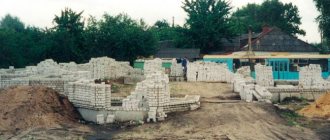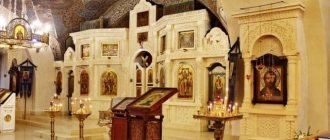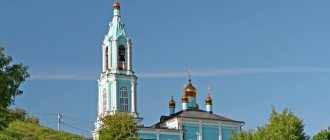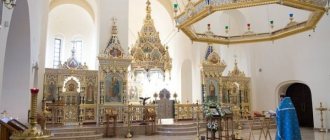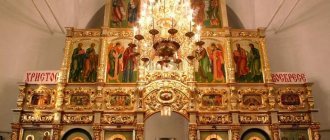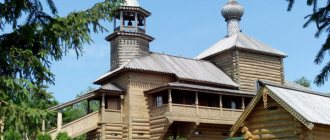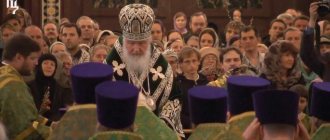Mir
Russia Moscow Church of St. Vladimir in Starye Sadekh (Moscow) Map is loading…
{"format":"leaflet","minzoom":false,"maxzoom":false,"limit":50,"offset":0,"link":"all","sort":[""], "order":[],"headers":"show","mainlabel":"","intro":"","outro":"","searchlabel":"\u2026 \u0441\u043b\u0435\ u0434\u0443\u044e\u0449\u0438\u0435 \u0440\u0435\u0437\u0443\u043b\u044c\u0442\u0430\u0442\u044b","default":"","import-annotation":false,"width ":"auto","height":"350px","centre":{"text":"","title":"""link":"","lat":55.755279999999999063220457173883914947509765625,"lon": 37.64056000000000068439476308412849903106689453125,"icon":""},"title":"","label":"","icon":"","lines":[],"polygons":[],"circles":[ ],"rectangles":[],"copycoords":false,"static":false,"zoom":8,"defzoom":14,"layers":["OpenStreetMap"],"image layers":[] ,"overlays":[],"resizable":false,"fullscreen":true,"scrollwheelzoom":true,"cluster":false,"clustermaxzoom":9,"clusterzoomonclick":true,"clustermaxradius":80, "clusterspiderfy":true,"geojson":"","clicktarget":"","showtitle":true,"hidenamespace":false,"template":"","userparam":"","activeicon": "","pagelabel":false,"ajaxcoordproperty":"","ajaxquery":"","locations":[{"text":"\u003Cb\u003E\u003Ca href=\"/palomnik/%D0% A6%D0%B5%D1%80%D0%BA%D0%BE%D0%B2%D1%8C_%D0%A1%D0%B2%D1%8F%D1%82%D0%BE%D0%B3% D0%BE_%D0%92%D0%BB%D0%B0%D0%B4%D0%B8%D0%BC%D0%B8%D1%80%D0%B0_%D0%B2_%D0%A1%D1% 82%D0%B0%D1%80%D1%8B%D1%85_%D0%A1%D0%B0%D0%B4%D0%B5%D1%85_(%D0%9C%D0%BE%D1%81 %D0%BA%D0%B2%D0%B0)\» title=\»\u0426\u0435\u0440\u043a\u043e\u0432\u044c \u0421\u0432\u044f\u0442\u043e\u0433\u043e \u0412\ ( u041c\u043e\u0441\u043a\u0432 \u0430)\»\u003E\u0426\u0435\u0440\u043a\u043e\u0432\u044c \u0421\u0432\u044f\u0442\u043e\u0433\u043e \u0412\u043b\u0430\u04 34\u0438\u043c\u0438\ u0440\u0430 \u0432 \u0421\u0442\u0430\u0440\u044b\u0445 \u0421\u0430\u0434\u0435\u0445 (\u041c\u043e\u0441\u043a\u0432\u0430) \u003C/a\u003E\u003C/ b\u003E\u003Chr /\u003E\u003Ca href=\"/palomnik/%D0%A1%D0%B2%D0%BE%D0%B9%D1%81%D1%82%D0%B2%D0%BE: %D0%90%D0%BD%D0%BD%D0%BE%D1%82%D0%B0%D1%86%D0%B8%D1%8F\" title=\"\u0421\u0432\u043e\u0439 \u0441\u0442\u0432\u043e:\u0410\u043d\u043d\u043e\u0442\u0430\u0446\u0438\u044f\u003E\u0410\u043d\u043d\u043e\u0442\u0430 \u0446\u0438\u044f\ u003C/a\u003E: "'\u0425\u0440\u0430\u043c \u0421\u0432\u044f\u0442\u043e\u0433\u043e \u0440\u0430\u0432\u043d\u043e\u0430\u0 43f\u043e\u0441\u0442 \u043e\u043b\u044c\u043d\u043e\u0433\u043e \u043a\u043d\u044f\u0437\u044f \u0412\u043b\u0430\u0434\u0438\u043c\u0438\u0440\ u0430\u0432\u0421\u0442\u0430 '' 4b\u0439\u0445\u0440\u0430 \u043c \u0411\u043e\u0433\u043e\u044f\u0432\u043b\u0435\u043d\u0441\u043a\u043e\u0433\u043e \u0431\u043b\u0430\u0433\u043e\ u0447\u0438\u043d\u0438\u044f \u041c\u043e\u0441\u043a\u043e\u0432\u0441\u043a\u043e\u0439 \u0433\u043e\u0440\u043e\u0434\u0441\u043a\u043e\u0439 \u0435\ u043f\u0430\u0440\u0445\u0438 \u0438. \u0420\u0430\u0441\u043f\u043e\u043b\u043e\u0436\u0435\u043d \u0432 \u0438\u0441\u0442\u043e\u0440\u0438\u0447\u0435\u0441\ u043a\u043e\u043c\u0440\u0430 \u0439\u043e\u043d\u0435 \u041c\u043e\u0441\u043a\u0432\u044b, \u043a\u043e\u0442\u043e\u0440\u044b\u0439 \u0440\u0430\u043 d\u044c\u0448\u0435\u043d\ u0430\u0437\u044b\u0432\u0430\u043b\u0438 \u041a\u0443\u043b\u0438\u0448\u043a\u0438.","title":"\u0426\u0435\u0440\u043a\u043e\u0 432\u044c\ u0421\u0432\u044f\u0442\u043e\u0433\u043e \u0412\u043b\u0430\u0434\u0438\u043c\u0438\u0440\u0430 \u0432 \u0421\u0442\u0430\u 0440\u044b\u0445\u0421\u0430\ u0434\u0435\u0445 (\u041c\u043e\u0441\u043a\u0432\u0430)","link":"","lat":55.755279999999999063220457173883914947509765625,"lon":37.64 056000000000068439476308412849903106689453125,"icon":""}]" imageLayers":[]}
55.755317; 37.640524
Russia, Moscow, Starosadsky lane, 11/1с2
Moscow
Russia
Telephone:
+7 495 621-92-22
Church of the Holy Equal-to-the-Apostles Prince Vladimir in Starye Sady
- Orthodox Church of the Epiphany Deanery of the Moscow City Diocese. Located in the historical district of Moscow, which used to be called Kulishki.
History[edit]
In Moscow, near Solyanka, on an elevated place, there is a small white church in the name of St. Equal-to-the-Apostles Prince Vladimir, baptist of the Russian land. The church is located on the high edge of the disappeared river Rachka at the junction of old Moscow lanes: Maly and Bolshoy Ivanovsky (now Zabelin Street), Kosmodamianovsky (since 1922 - Starosadsky) and Khokhlovsky, opposite the Ivanovsky Monastery.
“Old Gardens” is the ancient name of the area. On the southern, well-lit slope of the hill already in the 14th–15th centuries. began to plant gardens. The garden, planted near the summer residence of the Grand Dukes, stretched from the current Pokrovka Street to the mouth of the Yauza River. Nearby, at the Church of the Three Saints, was the summer residence of the Moscow Metropolitan.
In the spiritual charter of 1417 of the Grand Duke of Moscow Vasily I (reigned 1389–1425), the eldest son of Dmitry Donskoy, among the Moscow villages the “New courtyard outside the city near St. Vladimir” is mentioned. However, this courtyard of the church is not yet in the spiritual documents of Prince Vasily I in 1406–1407. Thus, the construction of the first church can be dated back to the time between 1407 and 1417. In all likelihood, the church was wooden then.
Under Grand Duke Vasily Ivanovich III (reigned 1505–1533), a new stone one was built on the site of a wooden church by the Italian Aleviz Novy (Fryazin). As the 2nd Sophia and Resurrection Chronicles note for 1514, “that same spring, the noble and Christ-loving Grand Duke Vasily Ivanovich of All Rus', with much desire and faith, commanded the foundation and construction of stone and brick churches in Moscow: on the Bolshoi Posad, behind the market, a church Introduction The Holy Mother of God and the Church of Saint Volodymyr in Sadekh..."
Vladimir Church, 1882
The Aleviz building stood for a century and a half. Research by historians and restorers in recent years gives reason to believe that the multi-volume pictorial composition of the existing church was conceived in the middle and implemented in the second half of the 17th century. In the “ruzhny book” of 1677, the border of the holy martyrs Kirik and Julitta is mentioned for the first time. The consecration of the chapel of Saints Boris and Gleb took place in 1689, and Princess Sofya Alekseevna was present.
A multi-tiered bell tower was erected above the northwestern corner of the refectory, rebuilt in the 18th century. It is interesting to note the changes in the name of the temple. The wooden church at the grand ducal court was called “St. Volodymer”. When the stone church was built by Aleviz the New, there was no longer a grand-ducal court, but gardens remained, and from that time the church was called “St. Volodymyr in Sadekh.” At the very end of the 17th century. The Tsar's New Garden is being built in the Kremlin, and the church is now called "Prince Vladimir, in Old Gardens."
Until 1711, at the Church of St. Prince Vladimir, in Sadekh, there was a Patriarchal almshouse, where from 41 to 88 people, male and female, were cared for.
The life of St. Hilarion, the founder of the famous Florishcheva Hermitage (he died as Metropolitan of Suzdal in 1707), describes a case of exorcism of a demon, which historians associate with the mentioned almshouse.
In 1666, “in the Patriarchal women's almshouse in Kulichki, due to the action of some sorcerer, a demon settled... Sovereign Alexei Mikhailovich ordered clergy to perform a prayer rite in the almshouse to exorcise the unclean spirit. But all attempts were unsuccessful: the demon convicted the worshipers of their sins and shamed them, instilling fear in them...” Then the Emperor blessed St. Hilarion to cast out the unclean spirit. “The ascetic struggled with the demon for seven weeks, diligently saying prayers, blessing water and sprinkling it everywhere. Little by little, through the prayers of Father Hilarion, the unclean one was expelled from the almshouse and never showed up there again..."
Currently, on the site of the Patriarchal almshouse there is a two-story stone clergy house. Subsequently, the appearance of the temple gradually changed. In the XVIII–XIX centuries. The main causes of damage were natural disasters.
So in 1718, the roofs on the altars, refectory, bell tower and church burned down. On May 30, 1737, during a devastating fire in Moscow, the temple burned down. The widow of steward F.P. Verderevsky, Tatyana Fedorovna, who buried her husband next to his relatives in the chapel of Saints Boris and Gleb, took over the post-fire repairs “at her own expense.” In 1787 “...after a storm, some crosses on the church shook, and the parishioners asked permission to gild them, fix the heads on that church and cover it with sheet iron, and instead of the wooden roof that was on that church, cover it again with the same iron.” In 1794, during the reign of Empress Catherine II, the walls of the temple were painted. In 1812, during the invasion of Napoleonic troops, the church was again damaged by fire. The fire was significant, since after it the church was assigned to the Church of Cosmas and Damian on Pokrovka, and the property that survived the fire was stored in the Ivanovo Monastery. Misfortune also befell the parishioners - the fire destroyed 16 houses, and among them 4 houses of clergy. The church was not active for several years. It was already considered possible to dismantle the Vladimir Church, “as if it were completely unnecessary and would forever remain without a parish.”
Acting State Councilor Mikhail Volsky began to advocate for the preservation of the church. In July 1813, citing respect for the memory of St. Prince Vladimir, “this great saint of God, who founded the Christian faith in Russia and protects it to this day, in whose name there was this one temple in Moscow,” he asks permission to “correct the church at his own expense.” After repairs, the main temple and the chapel of the holy princes Boris and Gleb were consecrated on November 19, 1819. The chapel in the name of the holy martyrs Kirik and Julitta was consecrated only in 1827 by Metropolitan Philaret of Moscow and Kolomna.
The temple was restored in 1874, with a special role played by the elder Pavel Vasilyevich Patrikeev, who replaced the iconostasis that was falling apart from old age, gilded all the vestments on the icons, and partially made new ones, restored the painting that had almost disappeared over time, installed new chandeliers and candlesticks, redecorated the chapel of Boris and Gleb, placed new gilded crosses on the dome and bell tower.
By this time, the church, in the process of numerous post-fire repairs, had already undergone a number of significant changes: the bell tower of the 17th century was rebuilt; the completion of the walls of the main volume of the Vladimir Church in the form of kokoshniks were dismantled; many architectural details were hidden in the attics; The chapel of Saints Cyricus and Julitta lost its completion. Until 1812, there was a large cemetery at the temple. From the church graveyard at the end of the 19th century. to the west there was a view of a significant part of Moscow towards the Vorobyovy Gory and the mountains themselves. Opposite the Church of St. Vladimir is the ancient Ivanovo convent. The main temple holiday in the monastery - the day of remembrance of the Beheading of the Prophet, Forerunner and Baptist of Christ John on August 29 according to the old style (September 11 according to the new style) - was also celebrated in the Church of the Baptist of Rus'.
In the old days, on this day, a large number of people gathered near the church and in the surrounding area, and a wool fair was held. The peasants brought many carts of wool, and after the festive service a brisk trade began. At the same time, tents with food supplies and sbiten were set up on the sides of the church for everyone participating in the fair. Church of St. Vladimir’s house was not locked from morning to evening, because almost all the visiting peasant traders used the proceeds from the sale of wool to serve prayers to the Baptist of Christ. The prayer services were served in the shortest possible manner, 2–3 minutes each, and over the two days of the holiday the priest had to serve more than 800 prayer services. From the memoirs of a contemporary, we learn that on this day the image of the truncated head of John the Baptist lay on the lectern. The head was decorated with a corolla with a bunch of red threads threaded through it. After the prayer service, pilgrims venerated the image and took red strings as souvenirs.
For six centuries, on a hill in the former grand-ducal gardens in the temple in the name of the Baptist of Rus', prayers have been offered for the people, “the authorities and the army”; At this place, the great princes of Moscow once knelt, patriarchs, Russian tsars and queens prayed here. During this time, like all of Moscow and Russia, the church, the clergy, and parishioners had to endure a lot of hardships, troubles and misfortunes: Tatar raids, Polish intervention, fires, plague, French invasion, and finally, revolution and persecution of the Church in the 20th century . Two priests of the Vladimir Church - Hieromartyr Alexander Pokrovsky (who served here since 1909, first as a deacon, and in 1919-22 as a priest) and Hieromartyr Vladimir Ambartsumov (who served in the temple in 1928-30), glorified by the Russian Orthodox Church in the New Martyrs and Confessors of Russia. Both of them were shot at the Butovo firing range in 1937. The last rector, priest Sergius Bordelius (monastically Theodore), served in the Vladimir Church since 1927. Arrested in early 1932, he died in Butyrka prison on April 7 (on the feast of the Annunciation) in investigation time. After Fr. Sergius Bordelius from May 1932, priest Evgeniy Klimentovsky served in the Vladimir Church. He was arrested on January 26, 1933, and the temple was closed by decree of the Presidium of the Moscow Regional Executive Committee of March 23, 1933.
In 1937, the church began to be dismantled, but was not finished. In a disfigured state - deprived of domes and interior decoration - it stood until the 70s, when slow restoration began for the 1980 Moscow Olympics. At the end of 1990, the temple was transferred to the Orthodox community. Consecration of the Church of St. Prince Vladimir and the first divine service there took place on May 24, 1991, on the day of remembrance of Saints Equal-to-the-Apostles Cyril and Methodius, teachers of Slovenia.
See also:
Historical description of the church in the name of St. Equal-to-the-Apostles and Righteous Prince Vladimir, in Sadikh in Moscow, near Solyanka, with the appendix of a short sketch of the life of St. Vladimir and the Baptism of Rus' (1888, 42 pages)
Church after the revolution and today
In 1933, the church on Starosadsky Lane was closed and began to be dismantled. The temple domes were destroyed and the interior decoration was destroyed. If local security authorities had not intervened, the historical monument would probably have been demolished.
The building was transferred to the Historical Library, and soon the library reserve fund was located here. However, in 1980 there was a fire in the temple. All the books were burned. The fire did not spare the remains of the temple's paintings.
In 1990, the external finishing work of the Vladimir shrine was completed. The temple was returned to the Russian Orthodox Church. A year later, the first liturgy after a long break was held in the building. Worship services resumed only in 1998.
The Church of St. Prince Vladimir in the Old Gardens (Sadekh) is located at the address: Moscow, Starosadsky Lane, 11, building 2 (Kitay-Gorod metro station).
Pilgrim[edit]
Schedule of services:
In the spring-winter period and in the spring, on Sundays, as well as on the days of the twelfths and great holidays, two Divine Liturgies are served: at 7.30 and 10.00 (in the summer, one Divine Liturgy is served at 9.00), the day before - the All-Night Vigil at 17.00.
On weekdays - worship at 8.00.
On Sunday at 17.00 – Canon and Akathist to the Most Holy Theotokos.
On Wednesday at 18.00 - Akathist to the Holy Equal-to-the-Apostles Prince Vladimir (except during the days of Great Lent).
Contacts and schedule of services
- Address: Vinogradnaya street, 18, Sochi, Krasnodar region, Russia.
- GPS coordinates: 43.603565, 39.717821.
- Phone: +7-862-233-10-86.
- Official website: https://hram-vladimira-sochi.ru/
- Schedule of services: https://hram-vladimira-sochi.ru/deyatelnost/bogosluzheniya.php
Those who managed to visit the St. Vladimir Church in Sochi and attend the service leave positive reviews. The singing of a church choir during a service puts parishioners in a special state of prayer and peace. Take a look here during your next Sochi vacation. In the meantime, watch the video about the described shrine, enjoy watching!
